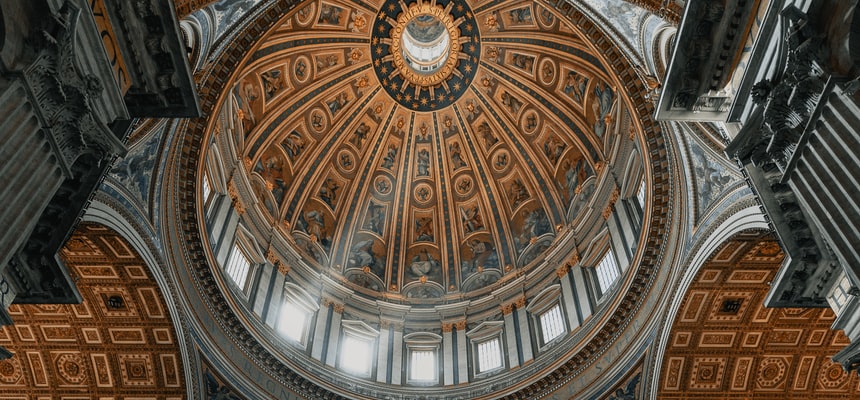
Pope Stephen IX was the 154th pope He was head of the Roman Church for a short period, 2 August 1057 – 29 March 1058.
Born Frederick of Lorraine, he was a younger member of the Ardennes-Verdun dynasty. This was a politically active family in the mid-11th century. He spent his early years as a canon at St. Lambert’s Cathedral in Liege, Belgium. Later he was an archdeacon. Between 1049 and 1051, he met with his cousin, Pope Leo IX who invited him to Rome. Leo appointed him cardinal-deacon of Santa Maria in Domnica. Then, he became the chancellor and librarian of the Vatican. A chancellor prepares and issues papal documents. This meant that he was often with the pope. He travelled with Leo IX through southern Italy and Germany beginning in the summer of 1052.
In the spring, they returned from Germany, Leo planned to go to war against the Normans in southern Italy with his German and papal troops. Leo lost a major battle at Civitate in April 1053. The Normans captured him and put him in prison at Benevento from June 1053 to March 1054. At the same time, the Church hierarchy attacked the Greek churches in Southern Italy, demanding they only follow the Latin rite or close.
A TRAGIC MISTAKE
The cousins were in communication throughout the pope’s imprisonment. Leo appointed Frederick to be part of an embassy to Constantinople in January 1054 along with Abbot Humbert and Archbishop Pietro. The purpose of this trip was to persuade Emperor Constantine to come to the aid of the pope. He asked the emperor to join forces with Emperor Henry III and destroy the Normans’ stronghold. A second purpose was a little more difficult. The Patriarch of Constantinople, Michael, wanted to be second in command to the pope, it appears. So, he demanded that he be named “ecumenical patriarch” of the Church. Leo refused that request and wanted his emissaries to forward that message.
Although the Byzantine Emperor welcomed the legates, the negotiations did not go well. In response to the closing of the Greek churches in Italy, Patriarch Michael closed all the Latin churches in Constantinople. He also insisted that the empire would not help with the Norman problem. Pope Leo IX died 19 April 1054, but word did not get back to his three legates soon enough. Negotiations continued but were at an impasse. By 16 July, Humbert presented a bull of excommunication to the patriarch and Archbishop Leo of Ohrid, the patriarch’s co-negotiator. Negotiations stopped. The arguments of hundreds of years between East and West came to a head and the Great Schism began.
Even so, Emperor Constantine honored the three representatives of Pope Leo and ladened them with gifts. Returning to Rome, Frederick had so much gold that Emperor Henry suspected him of treason.
In November 1054, Henry named his advisor the next pope. Gebhard took the name Victor II. Frederick returned to work at the chancellery. In the summer, Henry visited Rome and commanded Victor to arrest Frederick and send him to court in Germany. Frederick fled to Montecassino. He took vows as a monk and went to the isle of Termiti to await safety. Soon after, the abbot of Montecassino died. He was replaced with Abbot Peter, but without benefit of Victor’s blessings. With rumors of misdoings at the abbey, Victor set up investigations.
The following year, Victor felt so harassed by the Romans that he went to Germany to seek advice from his friend. Unfortunately, Henry died 10 October. Victor gained more power as regent to the new 6-year-old emperor. Due to this interruption, the investigations at Montecassino did not begin until May 1057. Frederick’s associate, Abbot Humbert, presided. Humbert ordered Abbot Peter to resign. Frederick returned from the island, A day later, he was voted in as the new abbot. A month later, Victor consecrated Frederick abbot.
Just three weeks later, Victor appointed him cardinal-presbyter of San Crisogono in Rome. Frederick qualified to attend the synod in Arezzo on 23 July. He returned to Rome, shortly, to visit his new church. A week later, Victor died, still in Arezzo.
Names of potential popes circulated, but no one seemed right. A number of Roman clergymen went to Frederick. They persuaded him to join them at the conclave. On 2 August, Frederick was chosen as the new pope and consecrated the next day. He took the name Stephen IX.
Stephen’s policies included continuing the Gregorian Reform, accenting clerical celibacy. To this end, he gave the cardinalate to Peter Damian and his friend Humbert. He, then, visited Montecassino 30 November to 10 February 1058. In December he was so sick he thought he was at the end. But he seemed to recover.
In an attempt to get his brother Godfrey crowned emperor, Pope Stephen began journeying to Lorraine but died in Florence 29 March. Some say it was a return of his earlier illness. Some say he died of poisoning. In fear, his retinue of Benedictine monks returned to the abbey on a secret route.
Pope Stephen was buried at the Church of Santa Reparata in Florence. When extensive renewal of the church occurred in the 1300s, his remains disappeared.

Recent Comments